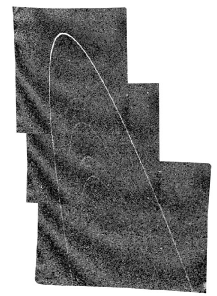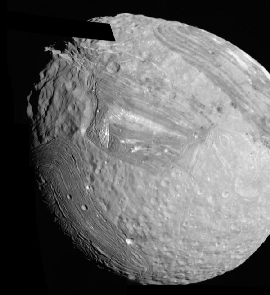Uranus
Facts about Uranus
• Uranus is the 7th planet from the Sun.
• It is a Gas Giant.
• It was discovered by accident in 1781 by William Herschel.
• It has rings that are composed of rocks.
Diameter: 31,764 miles
Mass: 14.5 Earth masses
Density: 1.29 where water = 1
Gravity: 0.90 times that of Earth
Albedo (% of Sunlight reflected): 51%
Rotation on Axis: 17.9 hours
I
nclination of Axis to Orbit: 97.9° (It rotates on its side!)
Distance from Sun: 1,783,950,000 miles
Revolution about Sun: 83.75 years
I
nclination of Orbit to Earth’s Orbit: 0.77°
Atmosphere: 83% hydrogen gas, 15% helium gas and 2% methane gas
Surface Temperature: –323° F just below cloudtops
Moons: Uranus has a few dozen moons. The largest is Titania with a diameter of exactly 1,000 miles, orbiting the planet every 8.7 days at a distance of 271,100 miles.
Observing in a small telescope: In a small telescope, Uranus appears as a small, pretty blue-green disk. You need magnifications of 100x or more just to see a hint of a disk. To find it, it is best to use a computerized GOTO telescope that can automatically move to any object chosen from a list in its hand-controller. It is possible to see Uranus with binoculars and distinguish it from similar magnitude stars by its color.

Uranus is tilted 98° to the plane of its orbit, so it appears to be rotating on its side.

